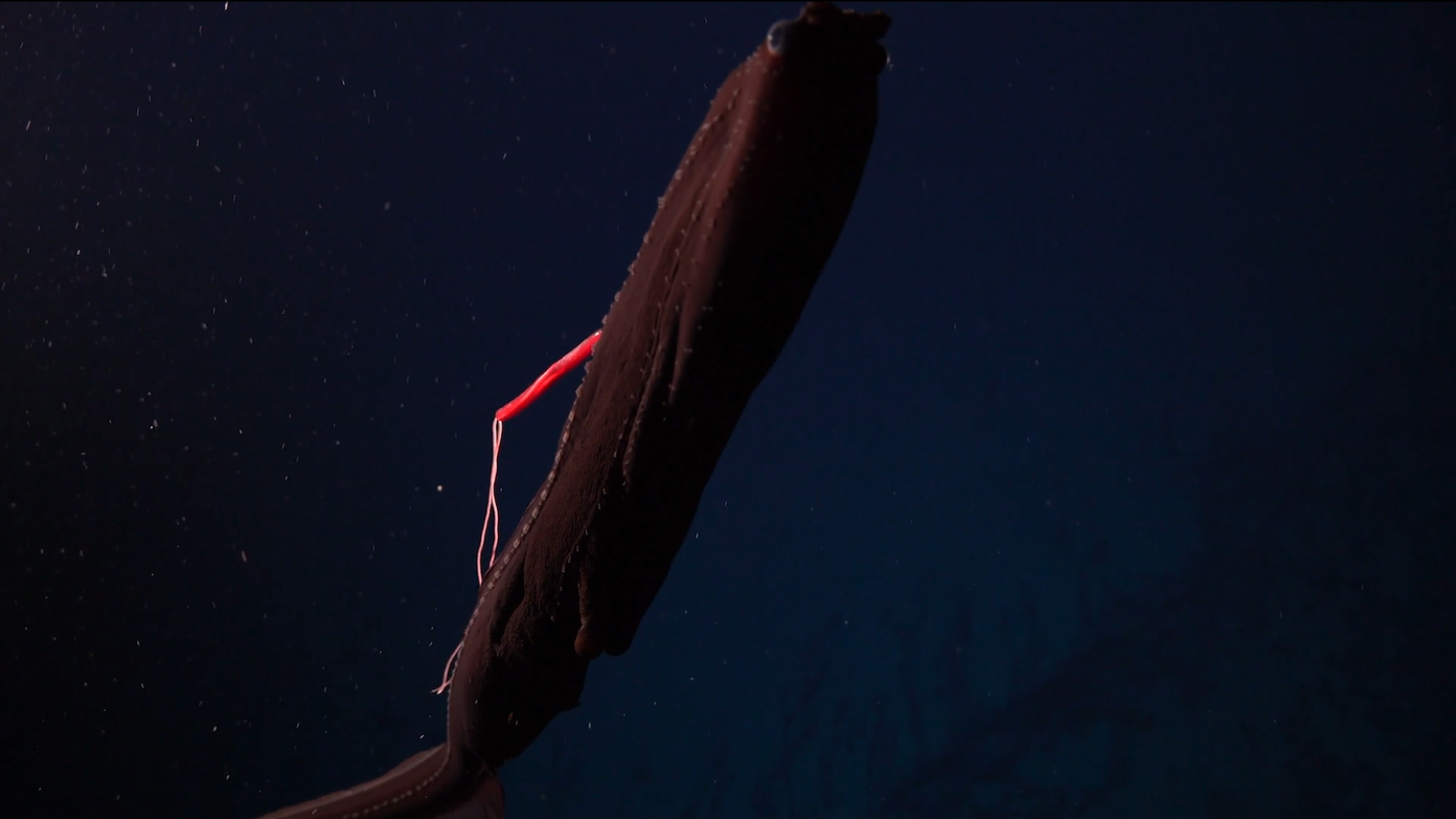Watch bright red blood-sucking parasite feast on gulper eel in rare, deep-sea footage
Remotely operated vehicle on a research dive captures close-up video of a beady-eyed gulper eel with a parasitic copepod permanently attached to its body.
Rare deep-sea footage captures a blood-sucking parasite latched onto the body of a ghoulish gulper eel. In the video, the eel swims close to the camera before revealing a bright-red parasite protruding from its back with two string-like structures dragging behind it.
Researchers from the Schmidt Ocean Institute spotted the elusive parasite while exploring seamounts in the Southeast Pacific Ocean along the coast of Chile. The parasite is likely a type of copepod — a small crustacean found throughout the world's oceans, representatives wrote in a Facebook post.
Related: Watch rare footage of a shapeshifting eel with 'remarkably full tummy' swimming in the deep sea
Gulper eels are commonly known as pelican eels because of their ability to blow up their mouths like balloons to catch prey, similar to how pelicans use their stretchy bill pouches like fishing nets. They are found worldwide at depths around 1,640 to 9,800 feet (500 to 3,000 meters). The new footage was recorded 6,148 feet (1,874 m) below the ocean surface by a remotely operated vehicle.

"The parasitic copepod is a member of the Pennellidae," James Bernot, an evolutionary biologist at the Smithsonian National Museum of Natural History, who was not on the expedition, told Live Science in an email.
Parasites in this family are mesoparasites — meaning they live partially within the body of their host. These parasites use a branching structure called a holdfast to embed themselves into the flesh of their host. When one of these parasites anchors itself into the tissue, "it feeds on blood and fluids that pool at the attachment site," Bernot said.

Pennellids have a complex life cycle, with some species having multiple hosts. Like other crustaceans, they begin their life as small planktonic larvae called nauplii. When one of these tiny organisms reaches a suitable host, it buries into the surface of the organism. Once inside, "its body transforms and grows many times larger into what we can now see here, with much of its newly enlarged body trailing outside of its host," Bernot said.
Get the world’s most fascinating discoveries delivered straight to your inbox.
The long string-like structures trailing behind it are the parasite's eggs. These copepods are "surprisingly caring mothers" that will hold onto their egg strings until they hatch. "This pennelid copepod probably has more than 100 eggs trailing behind it," Bernot said.
This parasite is permanently embedded into the gulper eel. "In fact it could not detach even if it did want to," Bernot said.
Seeing this parasite in action provides a rare insight into their lives, according to the Facebook post. "Thanks to robotic tools for exploration … scientists are getting a clear picture of a creature only previously observed via degraded samples collected roughly by nets," representatives wrote.

Elise studied marine biology at the University of Portsmouth in the U.K. She has worked as a freelance journalist focusing on the aquatic realm.


